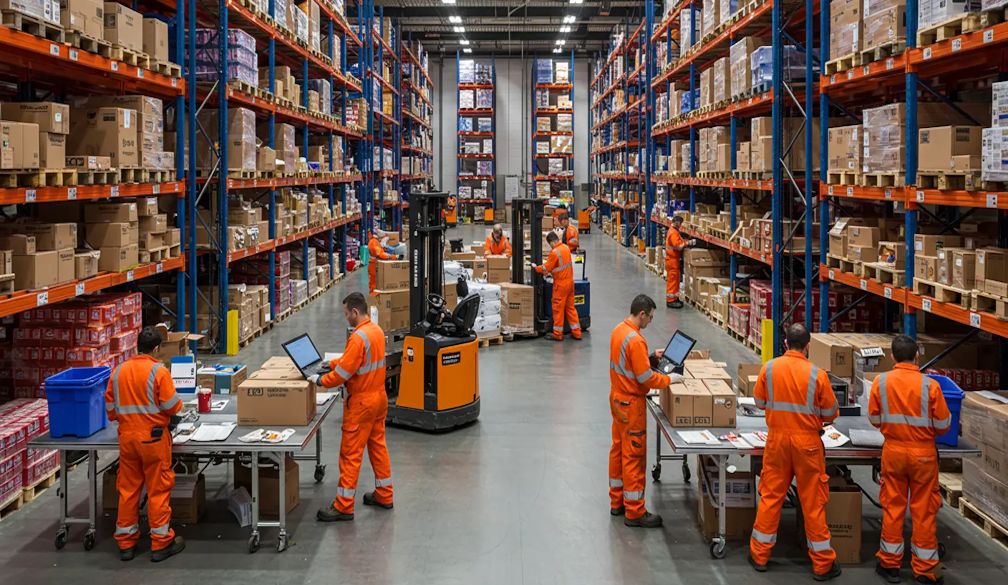Coveralls: An Essential Safety Gear for Workers

It is important to protect workers in various industries. Coveralls provide full body protection to the workers and protect them from various risks, such as physical harm and chemical exposure. This blog delves into the importance of coveralls, explores their various types, discusses scenarios necessitating their use, and highlights their applications across different industries.
Importance of Coveralls
Coveralls protect workers from potential workplace hazards. Their significance includes:
1. Protection from Physical Hazards
Workers face risks such as cuts, abrasions, and impacts in sectors like construction and manufacturing. Coveralls provide an extra line of protection from falling debris, sharp objects, and machinery in industrial cleaning facilities. Workers are protected from potential harm thanks to specialized coveralls made of materials such as laminated polypropylene, which have superior resistance to chemical penetration.
2. Fire and Heat Resistance
Workers are exposed to flames and high temperatures in industries such as oil and gas, welding, and firefighting. Flame resistant coveralls are designed from materials like Nomex to withstand heat and minimize the risk of burns or other fire related injuries.
3. Biological Contaminant Protection
Healthcare professionals, laboratory technicians, and those handling hazardous biological materials require protection against infectious agents. To reduce exposure to bacteria, viruses, and other contaminants, disposable coveralls serve as a barrier to protect workers and preserve environmental hygiene.
4. Enhanced Visibility
High visibility coveralls featuring reflective strips to enhance visibility for workers operating in low-light conditions or high-traffic areas to reduce the risk of accidents.
Types of Coveralls
Identifying the workplace hazards helps in choosing the best coveralls. Common types include:
1. Standard Work Coveralls
These coveralls are designed for general purpose, made from durable cotton or polyester blends. They are perfect for tasks in factories, workshops, or landscaping because they protect from dirt, grease, and small abrasions.
2. Flame-Resistant (FR) Coveralls
To make FR coveralls essential for industries with exposure to open flames or flammable materials to reduce the risk of burns or fire related injuries, they are designed from materials that can withstand heat.
3. High-Visibility Coveralls
Suitable for workers who work in low light conditions or highly visible locations with high traffic volumes. Coveralls feature fluorescent colors and reflective strips to enhance visibility to reduce the risk of accidents.
4. Insulated Coveralls
Insulated coveralls are suitable for outdoor work or temperature-controlled warehouses because they are made for cold climates and help keep the body warm while protecting the worker from the weather.
5. Waterproof Coveralls
To keep workers dry and comfortable, waterproof coveralls prevent moisture penetration, essential for workers in wet conditions, such as agriculture or outdoor construction
6. Arc-Resistant Coveralls
Electricians and those handling electrical equipment wear arc resistant coveralls to protect against electrical shocks and burns caused by arc flashes.
7. Anti-Static Coveralls
Anti static coveralls are specifically designed for workers in the oil and gas industry, best suited for technicians, engineers, and field workers operating in hazardous work environments.
When Do We Need Coveralls?
The necessity for coveralls arises in various scenarios, including:
- Exposure to Hazardous Materials: When handling chemicals, biological agents, or radioactive substances, coveralls provide essential protection.
- Risk of Fire or Heat Exposure: Flame resistant coveralls are required when individuals are working in welding, foundry work, or firefighting.
- Cold or Wet Environments: Wearing insulated or waterproof coveralls is essential when working in cold or wet environments or in inclement weather.
- High-Visibility Requirements: To ensure worker visibility and safety in construction sites, roadwork, and other high traffic areas, high visibility coveralls are essential.
- Cleanroom Standards: To maintain stringent cleanliness standards in industries like pharmaceuticals and electronics manufacturing, use anti-static coveralls.
Uses of Coveralls Across Different Industries
Coveralls are integral to numerous sectors, each with unique requirements:
1. Pharmaceutical Processing
It is essential to keep an environment free of contaminants in the production of pharmaceuticals. Coveralls protect the worker and the product in order to guarantee adherence to strict hygiene regulations.
2. Food Processing and Manufacturing
Individuals wear coveralls that act as barriers against dirt and pathogens to prevent food contamination.









